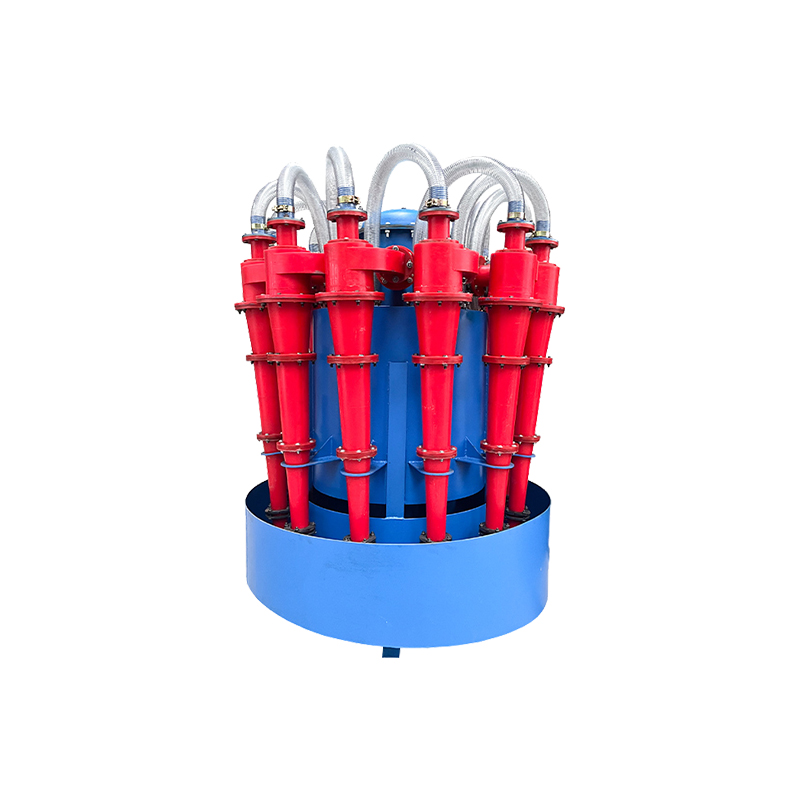Jun. 09, 2023
Mechanical Parts
Drilling fluid, also known as mud, plays a vital role in oil and gas drilling operations. It serves multiple purposes, including lubrication, cooling, and carrying drill cuttings to the surface. However, as the drilling process progresses, the mud tends to accumulate solid particles, such as sand, silt, and debris, which can impair its performance. Mud desanders are designed to remove these solid particles and maintain the quality and effectiveness of the drilling fluid.
The primary function of a mud desander is to separate and remove solid particles from the drilling fluid, ensuring its proper functionality. By eliminating these unwanted solids, mud desanders help in maintaining the desired properties of the drilling fluid, such as viscosity, density, and filtration capability. This, in turn, enhances drilling efficiency and reduces the potential for equipment damage.
Mud desanders typically consist of the following key components:
The inlet section of a Hydrocyclone mud desander is responsible for receiving the drilling fluid containing solid particles. It is designed to evenly distribute the fluid across the desander unit, ensuring effective separation.
The cyclone unit is the core component of a mud desander. It comprises a series of hydrocyclones, which are cylindrical devices with a conical bottom. The hydrocyclones use centrifugal force to separate the solid particles from the drilling fluid.
The overflow outlet is located at the top of the cyclone unit and is responsible for discharging the clean drilling fluid. The separated solid particles are not included in the overflow and are directed towards the underflow outlet.
The underflow outlet is positioned at the bottom of the cyclone unit and is responsible for collecting and discharging the separated solid particles, also known as desander underflow. The underflow outlet allows for the controlled removal of the solids from the system.
A mud desander (Drilling fluid desander) is typically equipped with a control system that regulates the flow rate and pressure within the unit. The control system ensures optimal performance and efficient separation of solid particles from the drilling fluid.

Mud desanders operate based on the principle of centrifugal force. The drilling fluid containing solid particles enters the desander through the inlet section and is directed into the cyclone unit. Inside the hydrocyclones, the fluid is subjected to high-speed rotational motion, which creates centrifugal forces. These forces cause the heavier solid particles to move towards the wall of the cyclone, while the cleaner drilling fluid moves towards the center and exits through the overflow outlet. The separated solid particles settle at the bottom of the cyclone and are discharged through the underflow outlet.
Drilling Mud desanders offer several significant benefits in oil and gas drilling operations:
By efficiently removing solid particles from the drilling fluid, mud desanders help maintain its quality and performance. Clean and properly conditioned drilling fluid ensures effective lubrication, cooling, and hole cleaning during the drilling process.
Effective solid particle separation reduces the risk of equipment clogging, abrasion, and other operational issues. This results in smoother drilling operations, increased penetration rates, and reduced downtime, ultimately enhancing drilling efficiency.
By preventing the entry of solid particles into drilling equipment, mud desanders contribute to the longevity and reliability of critical drilling components. Reduced equipment wear and tear translate into cost savings and improved overall equipment performance.
Efficient separation of solid particles from the drilling fluid helps minimize the environmental impact of drilling operations. Clean drilling fluid reduces the discharge of harmful contaminants into the environment, ensuring compliance with environmental regulations.
Mud desanders play a crucial role in the efficient management of drilling fluids in oil and gas operations. By effectively separating solid particles from the fluid, mud desanders enhance drilling fluid quality, improve drilling efficiency, extend equipment lifespan, and contribute to environmental protection. Incorporating mud desanders into drilling processes is a proactive measure that ensures the integrity of the drilling fluid and promotes sustainable and responsible drilling practices.
Previous: What is a waste heat recovery boiler and how does it work?
Next: Drum Gear Coupling: The Backbone of Efficient Power Transmission
If you are interested in sending in a Guest Blogger Submission,welcome to write for us!
All Comments ( 0 )